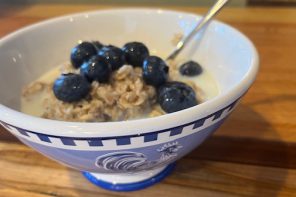Have you noticed the goldenrod bloom this season? With the exception of the extremely dry areas of the south, there seems to be much, much more of this wonderful, productive, attractive bloom than usual.
Maybe it’s just me…and that could be…but I tend to travel quite a bit this time of year to beekeeper meetings and like most keepers seem to notice honey plants to the exclusion of most others I see. And this year I’ve seen a lot of goldenrod.
What I’ve seen is large fields, empty of most other similar sized plants chock full of the stuff. Those fields that actually have crops in them…around here that would be corn and soybeans…seem to have fuller fencerows…pushing into the crop, fighting for room, light and water. A field that’s covered with now yellowed soybean plants framed in bright gold is a snapshot in autumn that you get to see only once in awhile…if you have it, take a long look.
Goldenrod is a fussy honey plant as far as nectar production is concerned I understand. It begins developing flower buds long before you see them, way back in July here in Ohio, perhaps a bit later further south. If soil moisture isn’t up to what goldenrod needs … and I’m not just sure what that might be… the nectaries don’t develop, or don’t develop fully, or…well, goldenrod seems to need moisture right around the first half of July. If it doesn’t get that drink in mid-summer it doesn’t produce a lot of nectar later. Frustratingly, the blooms, unaffected by the dryness in July, turn out as much, as lavish, and as bright gold as ever. Bees visit, bees get pollen, bees get some nectar, but bees don’t thrive on July-dry goldenrod. We had more than lots of rain in July this year, and now it’s been turned into this wonderful, smelly liquid gold.
And then there’s the variety. There are several, many in fact. Some bloom as early as July, others wait until late September. Of course these produce different amounts of nectar at different times of the day and make honeys that taste vastly different. To make this more difficult…some plants, goldenrod included, will bloom earlier than normal when under stress, primarily drought stress. So who knows, really?
Moreover, I’ve tasted golden rod honey from what appeared to me to be the same variety…the Canada species…from Wisconsin, Connecticut and Massachusetts, and now Ohio…and you’d swear the honeys were from vastly different species…and maybe they were. Varieties of goldenrod tend to look similar…to my eye the major differences being feathery spiked kinds as opposed to the flat topped kinds…and then there’s the rumor that some of these hybridize in the wild…it’s enough to make a beekeeper crazy.
Of course the climate and soil differences between Connecticut, Ohio and Wisconsin are significant. So it might be these very measureable aspects that cause the flavor profiles to change. As far as I know nobody has actually tested these differences. Too bad.
And too often, a small goldenrod crop is gathered by the bees along with several kinds of asters, some latent actinomerous (Golden Honey Plant), perhaps wild sunflowers just starting to bloom, and who knows what else. The aroma from the curing goldenrod, no matter the amount, can be a false signal on what the honey really is…all goldenrod, some, almost none? And the taste? Sadly, even if it smells like a good goldenrod crop, it might be a typical autumn blend…a seasonal wildflower mix that tastes…bitter like asters, sweet like goldenrod, or mixed sunflower and something else.
The west and southwest parts of this country tend to not have much goldenrod, or at least not enough to gather any attention, but much of the rest of the country produces several varieties of the crop. But only about 20 states have enough isolated groups of the plant, and enough good fall weather to actually harvest a varietal crop. Generally, it’s much sought after where it is available. Here in northeast Ohio there’s a rabid bunch in the Cleveland area that can’t get enough of it. I’d be rich if I had barrels of the stuff.
When considering goldenrod honey though, as you already know, like politics all honey is local. The somewhat bitter goldenrod honey from northwest Connecticut was unpleasant to me because I was used to a strong, but not too strong Wisconsin goldenrod honey. And now, the butterscotch smoothness of Ohio’s goldenrod is a treat, and the pull to get at least some of it from the bees before they store it all away for a winter’s feast is strong…almost as strong as the malty, yeasty wonderful aroma that floats over the deck every evening right about now.
Our top bar hive reeks of goldenrod ripening right now, too, but we are wondering what winter will bring for this hive of ours. Explore a bit, if you’d like, of this hive’s progress at www.MotherEarthNews.com, just as soon as they get the new story published.








I am interested in starting a bee hive and I am told there are places who will furnish you to get started with a hive and bees..Do you know who I should talk to about this? I live in Traverse City, Michigan!